We have seen very few Monarch butterflies in our backyard for the last two years, but that doesn’t mean they are not there. Caterpillars are showing up on our milkweeds, so it seems that they must be making whoopee somewhere, then flying in under the radar and laying their eggs on our plants.
Nadia and I (especially Nadia) have watched these distinctive larvae like hawks, but some have been disappearing—victims, I suppose, of predators who haven’t yet learned their lesson about the bitter toxins in the caterpillars from the milkweeds they feed or are immune to it. So, since we happened to have a couple milkweeds handy that were growing in buckets (rescued from a friendly neighbor’s yard with their permission), Nadia transplanted the butterfly wannabees to them and brought them inside. They thrived and are thriving still.
Shades of my long-lost youth! At the green young age of something or other (I forget) I raised a caterpillar to glorious monarchy adulthood, with a mason jar full of milkweed leaves and lid punched full of holes with a hammer and nail. The day it emerged from its jewel-like chrysalis, it perched on my shoulder for a long time as its wings unfolded and dried, finally striking off to begin its travels.
Now for the first time in maybe fifty years, I would watch again. And this time I had a camera that did more than my old Brownie box ever dreamed of. Two of the three tenants had already formed their chrysalises and the third was getting ready.
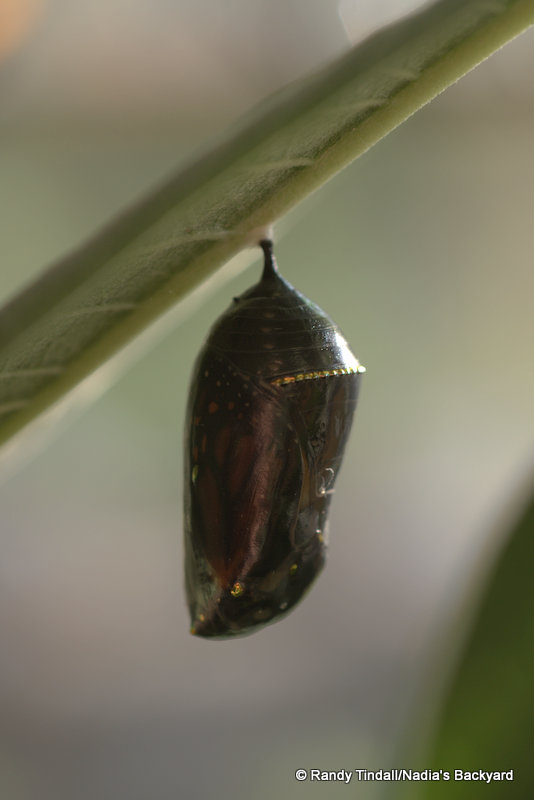
This one is two weeks old. The butterfly is ready to emerge. The colors of the adult are showing through the thin walls of the chrysalis.
At this point, about 8:40 a.m., I carefully set my camera on a tripod, composed and focused and told it to take a picture every five minutes, while Nadia and I went off and did other stuff. (Mostly we kept coming back over and over to watch any progress that might be happening, but this little thing was in no hurry.) For hours, we got lots of pictures like this one:
At around 11 a.m., the dark colored chrysalis decided to disgorge its cargo and we found this:
It took less than five minutes to emerge. This adult was later taken outside and released after its wings had formed up. It’s hard to watch the kids leaving home, but…
Then, finally, about 4:40 the camera recorded some movement and subtle color changes. Unfortunately we were outside at this point, or I would have decreased the photo interval to a much shorter time.
And just five minutes later!
- A half-formed chrysalis in just a few minutes!
Another few minutes and the miracle was nearly complete. We never realized how fast this process happened, once it starts.
By 6:30 in the evening, we had our shiny, new package, just like we find them outside.
Now we just wait two weeks and we get to photograph the emerging adult. I’ll use a shorter interval this time.
Sometimes in this world it can be hard to maintain a sense of wonder and the miraculous. Try raising Monarchs and just try to remain indifferent to the marvels of what you will witness. This is truly one of nature’s small but spectacular passages, amazing, full of symbolism and happening all around us. What a tragedy it would be to lose this…

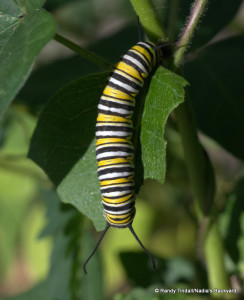
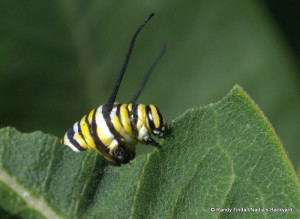
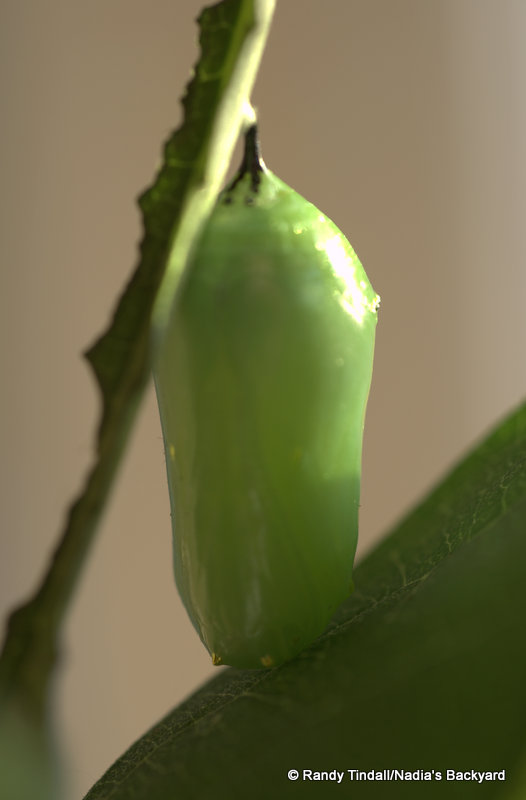
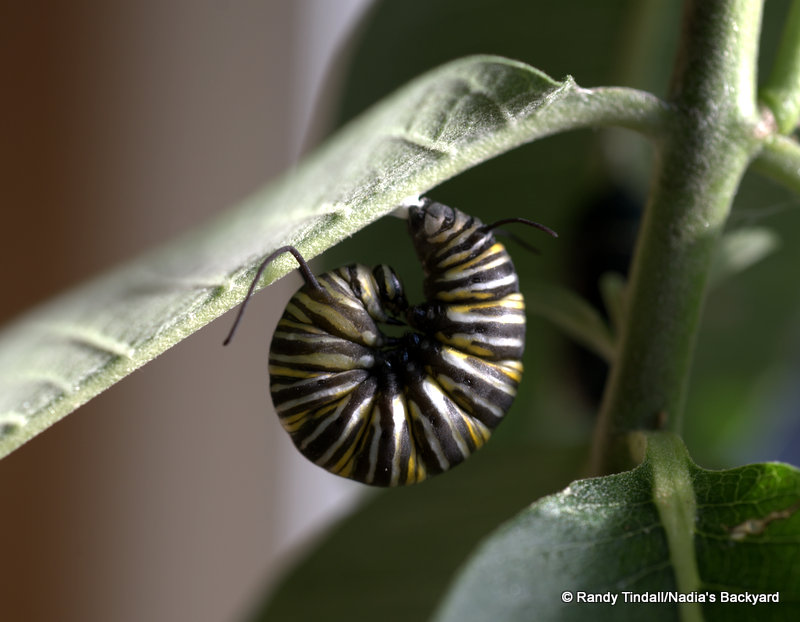
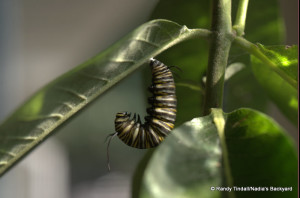
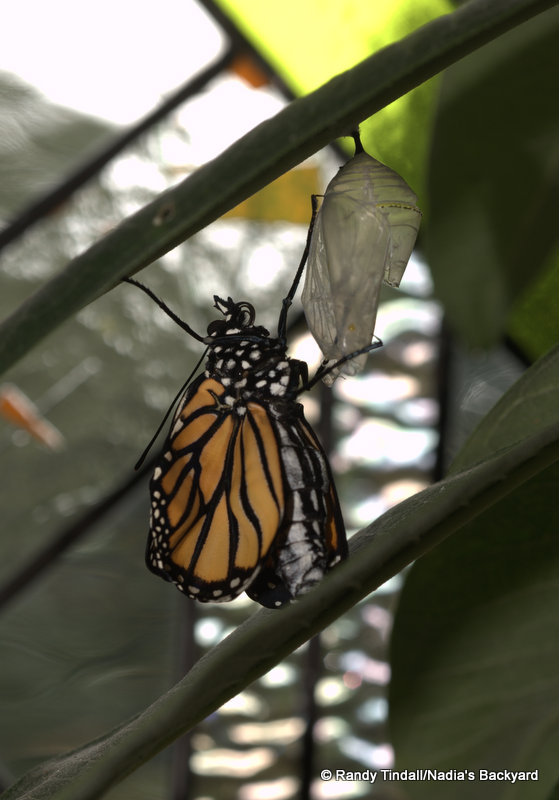
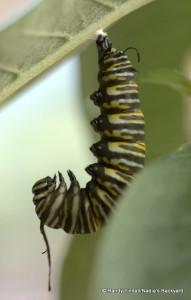
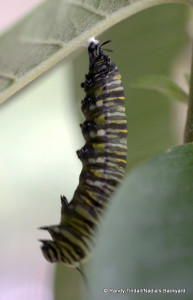

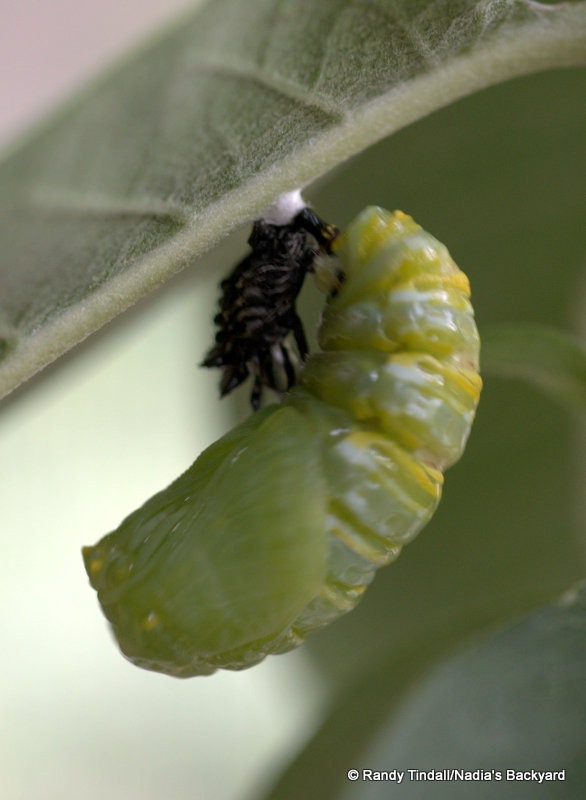
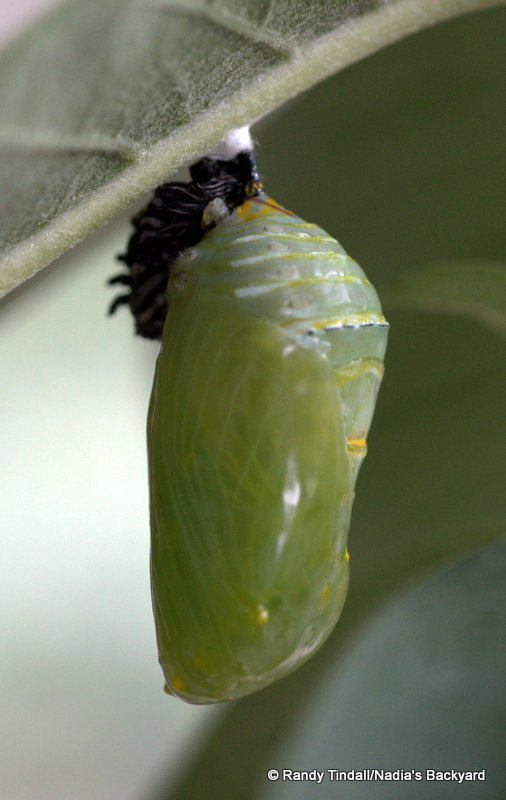

What a wonderful series of pictures!
Since Monarch migration just started I’ve been on the lookout for them. My sense is that their numbers are way down. Perhaps a consequence of last years drought?
But as this chart shows, the downward trend started before last year:
http://www.learner.org/jnorth/tm/monarch/PopulationMexicoAnalyzeGraph.html
Monarch Watch is doing a great job of helping the Monarchs:
http://www.monarchwatch.org
Thanks, Henry. We have seen very few Monarchs this year, so we hope to launch at least a few out into the world. Another chrysalis is turning dark today and I suspect the butterfly may emerge tomorrow, so I hope to capture a new series. Then another one should be ready in about a week and a half. By the way, I love your series on Facebook on your artistic influences. Keep them coming!